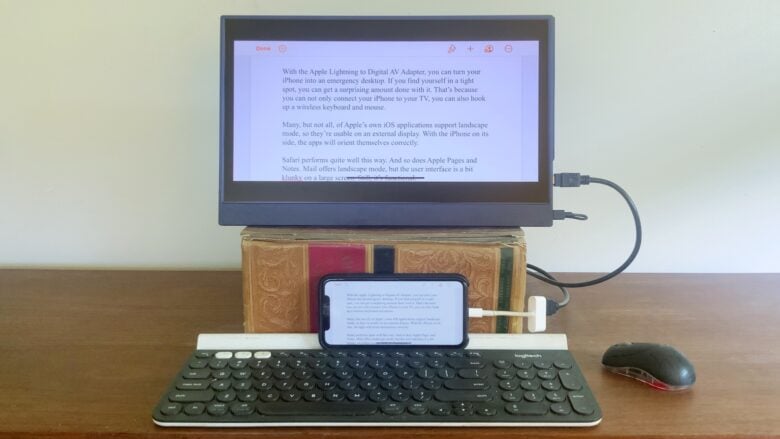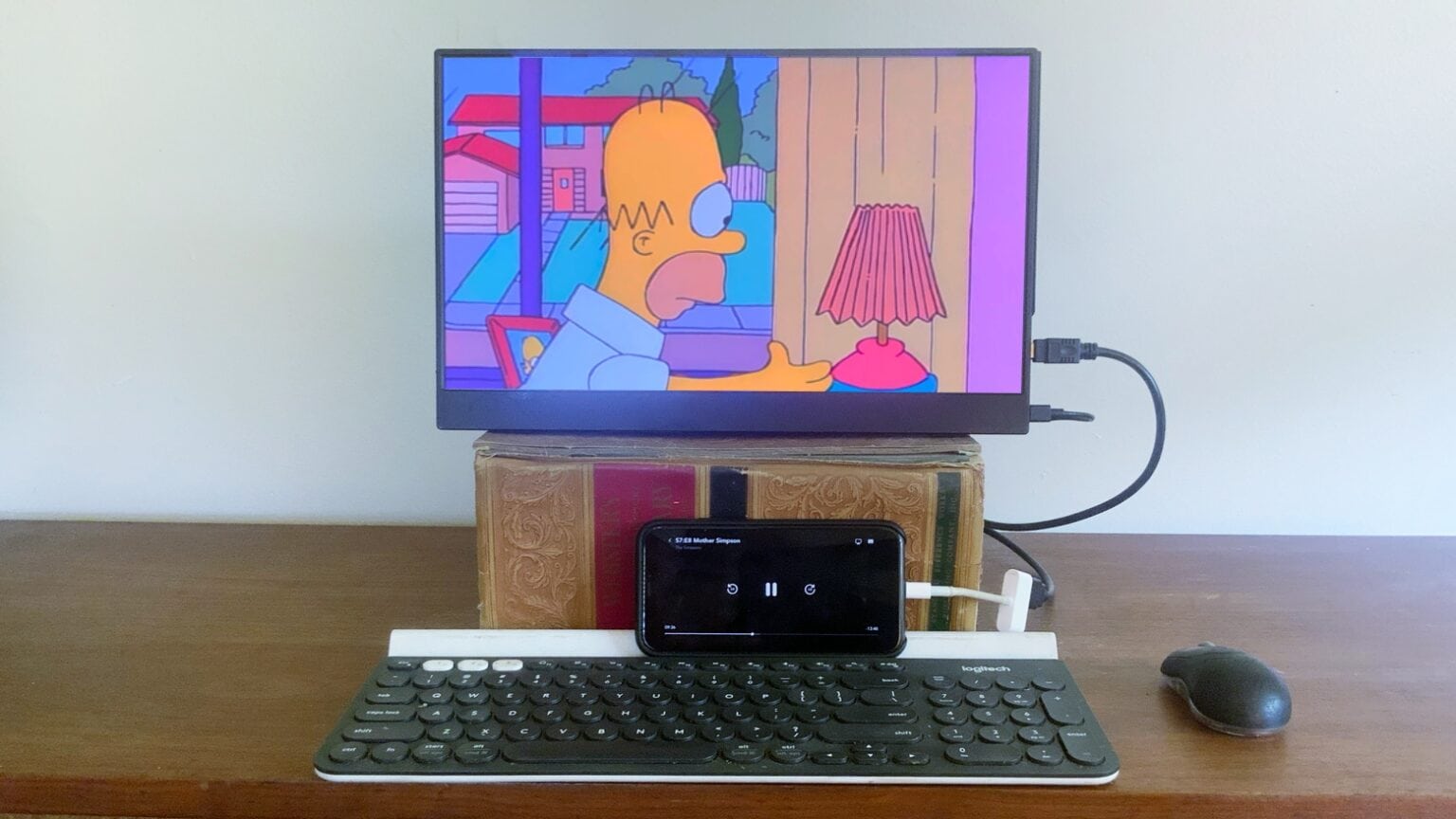Your iPhone is already one of the most useful things you own, but it can do even more if you hook it to a large second screen. Making the connection simply requires an adapter, and doing so opens up quite a few entertainment — and even some productivity — options.
iOS and iPhone are surprisingly powerful, and are being held back by the small display. Here’s what you get with a bigger one.
This post contains affiliate links. Cult of Mac may earn a commission when you use our links to buy items.
Making the connection
Hooking an iPhone to an HDMI display has been possible for years. All you need is the Apple Lightning to Digital AV Adapter ($39). It’s a very portable, easy-to-use bit of kit. Simply connect the adapter to your iPhone, then plug in an HDMI cable. Then your handset’s screen will be mirrored on the second screen.
You don’t have to run power to the adapter, though it has a Lightning port, so you have the option to charge your phone while it’s connected to the big display.
Of course, you can do screen mirroring with an Apple TV ($149 and up). But that’s overkill if you just want to add a larger display to your iPhone.
Connect iPhone to a second screen for movies and TV
Once your handset and the larger display are connected, you can watch the video from many streaming services. I’ve tested it with Apple TV+, Disney+, Amazon Prime, CBS All Access and YouTube — it works perfectly. According to the internet, Netflix and Hulu work, too. But not Xfinity Stream.
That said, there are limitations. Apple’s adapter has an HDMI 1.4 port — it can handle 1080p video but not 4K. However, not all streaming services offer 4K, so you might not be losing anything.
Also, you’re not watching a movie while scrolling through Instagram. Your iPhone will be fully occupied.
But still, if you’re looking for a way to watch movies or shows on a full-size TV, you don’t need to buy a Roku, Amazon Fire Stick, etc. All you need is your iPhone and Apple’s HDMI adapter.
Enjoy bigger games, too
iOS 13 added support for wireless game controllers, including some Xbox and PlayStation 4 ones. So you can hook your controller to your iPhone and not have to mess around with playing the game with touchscreen controls.
If you also hook your iPhone to a large screen with Apple’s adapter, you can lean back and play.
The limitation here is that not every game supports external controllers. You can find plenty of options in Apple Arcade, though. I’ve hooked my iPhone 11 to my TV to play Oceanhorn 2, while Lego Star Wars is a perennial favorite of mine.
So you can get away without buying a console if your gaming needs are fairly modest. Or if you are a big fan of Apple Arcade. Just let your trusty iPhone do the job.
Connect iPhone to a TV to be productive

Photo: Ed Hardy/Cult of Mac
With the Apple Lightning to Digital AV Adapter, you can turn your iPhone into an emergency desktop. If you find yourself in a tight spot, you can get a surprising amount done with it. That’s because you can not only connect your iPhone to your TV, you can also hook up a wireless keyboard and mouse.
Many, but not all, of Apple’s own iOS applications support landscape mode, so they’re usable on an external display. With the iPhone on its side, the apps will orient themselves correctly.
Safari performs quite well this way. And so do Pages and Notes. Mail offers landscape mode, but the user interface looks a bit clunky on a large screen. Still, it’s functional.
I’m not suggesting anyone dump their Mac or iPad and go 100% iPhone. Using an iOS device as a desktop is far from an ideal situation. But it might help get you out of a jam, if it’s the only computer available.
Among the challenges is a lack of side-by-side multitasking, and the iOS Home Screen doesn’t support landscape mode. Plus, there’s no easy way to change between applications using a keyboard and mouse.
But just to prove it’s possible, this entire article was written on an iPhone 11 with a Logitech K780 Bluetooth keyboard and mouse while hooked to a Vissles-M external display.


